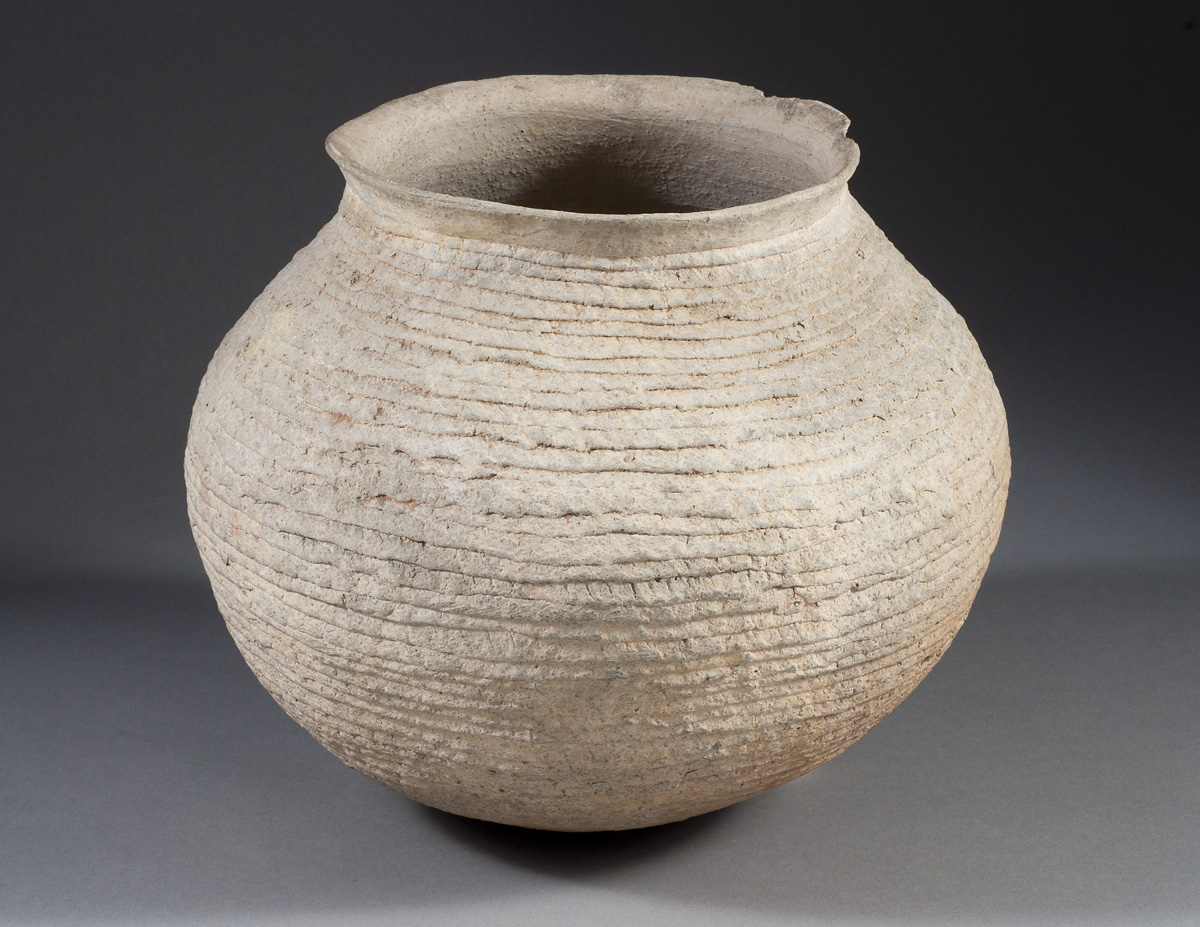Moenkopi Corrugated is a type of Tusayan Gray Ware with flattened “clapboard” corrugations that was produced in northeastern Arizona and southern Utah.
Archaeological Culture: Ancestral Puebloan, Kayenta
Date Range: Kayenta Heartland: A.D. 1130-1250 (Christenson 1994), Flagstaff Area: A.D. 1125-1275 (per Christian Downum, Northern Arizona University)
Construction: By coiling.
Firing: In a reducing atmosphere.
Core Color: Light gray to dark gray, sometimes black.
Temper: Abundant moderately coarse quartz sand; temper conspicuous on both surfaces.
Surface Finish: Rough; interiors scraped and fairly well smoothed; not polished; coils partly obliterated by flattening, sometimes almost to a uniform surface; finger indentations sometimes noticeable, but apparently not intentionally part of decorative scheme; coils fairly wide, usually from 6 to 8 mm, covering all or nearly all of exterior surfaces.
Surface Color: Normally gray.
Forms: Jars, bowls, jugs.
Vessel Thickness: 3.5 to 6.6 mm; average thickness, 4.7 mm
Decoration: No painted decoration.
Other Names: Gray Corrugated.
Compiled from the following sources:
Christenson, Andrew. (1994) A Test of Mean Ceramic Dating Using Well-Dated Kayenta-Anasazi Sites. Kiva 59 (3).
Colton, Harold S., and Lyndon L. Hargrave. (1937) Handbook of Northern Arizona Pottery Wares. Museum of Northern Arizona Bulletin 11, Flagstaff, Arizona.
Compiled by:
April Peters, Northern Arizona University Anthropology Laboratories.

